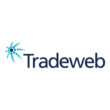Electronic bonds: fixed income trading platforms proliferate
 In contrast to the highly automated world of equities, bond trading is an area of the markets that is still heavily reliant on the telephone as a a trading tool, with person-to-person calls making up the bulk of activity on bond desks.
In contrast to the highly automated world of equities, bond trading is an area of the markets that is still heavily reliant on the telephone as a a trading tool, with person-to-person calls making up the bulk of activity on bond desks.
In the past few months, however, there has been a flurry of announcements of new electronic platforms from Citi, Deutsche Bank, Goldman Sachs, Morgan Stanley and others.
Counterintuitively, perhaps, this is partly because trade sizes are getting smaller, which according to a recent Celent report is driving institutional traders to look to complement their workflow and liquidity search with electronic order books.
Hitherto, electronic order books have tended to focus on the retail market, but they are highly advanced and likely to see increased adoption by the institutional buy side, which has to look elsewhere as dealers cut back on inventory holding.
“With more education of the available options and specialized vendors providing connectivity, aggregation, and smart order routing, adoption will accelerate,” said David Easthope, research director with Celent’s Securities & Investments Group and author of the report. “Whether the EOBs move from complementary to the de facto market will depend ultimately on whether a best execution culture for US corporates arrives on the buy side, and whether the regulators decide to put pressure in this direction.”
In some ways the market currently resembles the European equities scene shortly after the first Markets in Financial Instruments Directive when new multilateral trading facilities sprang into being on the back of the regulation.
As with many of those MiFID-inspired MTFs, there will be a die-back as some platforms thrive and others wither. “While there is immediate potential for uptake at new EOBs as they complement buy side trader workflow, not all will survive,” says Celent. “Some will remain highly focused on one segment of the market, while others will focus on a distinct set of clients. Even among the EOBs, the market is far from homogeneous. The institutional and retail markets will increasingly intersect as trade sizes fall, and we believe traders will direct an increasingly large flow of liquidity to the EOBs.”
Behind the scenes, technical developments have been paving the way for this shift in market structure to develop very rapidly, benefiting from earlier work in equities and FX, and parallel work in response to OTC derivatives regulation.
A milestone in this was the recent announcement from FIX Protocol Ltd, the non-profit industry standards organisation behind the electronic trading standard FIX Protocol, of recommended best practices and accompanying implementation guidelines for the electronic trading of bonds.
These recommendations will enable bond market participants to benefit from cost effective and efficient connectivity to the growing number of bond trading platforms emerging across the US and European markets.
Regulatory efforts to increase capital requirements and enhance transparency, in this traditionally voice-traded asset class, have led to market structure changes, creating an increasingly automated and venue-driven trading environment. The best practices and implementation guidelines provide recommendations to both existing and emerging venues, broker-dealers and market makers on how they can use the FIX Protocol to support their platforms. This development complements recommendations released in 2012 to support the trading of Credit Default Swaps and Interest Rate Swaps, which are currently being implemented by a number of Swap Execution Facilities.
“The completion and availability of best practices and implementation guidelines marks a key milestone in the development of FIX for Fixed Income,” said Ric Elvir, co-chair of the FPL Global Fixed Income Committee, Credit Trading, UBS. “This should dramatically promote industry adoption as they will provide consistent guidance to bond market participants looking to explore the many benefits that standardisation offers. The next stages of this project will help to continue this progress, expanding the use of FIX for other credit based products.”
The FPL guidelines have been produced by market participants who want to encourage the adoption of standards by fixed income trading venues. The recommendations explain how FIX can be implemented “in a consistent manner to lower implementation costs and deliver maximum industry-wide benefit”. including recommendations for how FIX can be used to support fixed income trading on:
• Markets based on quote negotiation, using Request for Quote models
• Quote-driven markets based on streaming executable quotes
• Markets based on central limit order books
FPL says that historically, fixed income markets have made less use of open trading standards such as the FIX Protocol for electronic trading compared to other asset classes. This goes back to the fact that a great deal of fixed income trading has been carried out over voice. Where automation has occurred, it says trading venues chose to put in place proprietary protocols as both the workflows and the instruments involved have been more complex than in equities and foreign exchange.
As such, the cost of connectivity for market participants to fixed income electronic venues has been significantly higher than connectivity to other asset classes.
The creation of a standard set of guidelines for the implementation of the FIX Protocol for fixed income trading is expected to produce the following benefits:
• Significant cost savings for market participants in connectivity
• Faster and easier integration between market participants
• Faster time to market for electronic venues to introduce new features and products
• Greater vendor choice and technical flexibility for implementers
• Improved supportability of trading platforms across asset classes
Sassan Danesh, co-chair FPL Global Fixed Income Committee and managing partner, ETrading Software said: “This initiative is expected to play a significant role in the evolution of bond trading. In recent years this market has witnessed massive change and as it becomes increasingly electronic encouraging the use of FIX will be vital to its success. FIX adoption will ensure that an efficient trading environment is created, within which innovation and competition can flourish.”











































